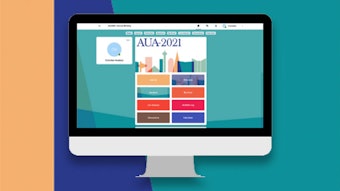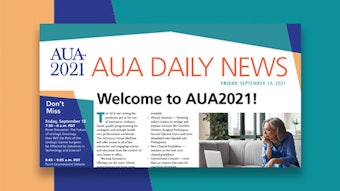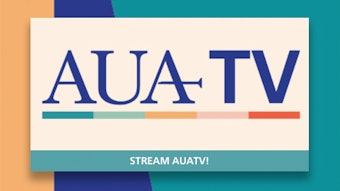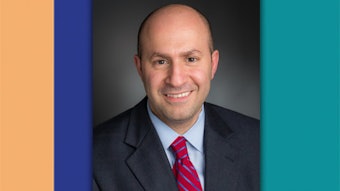Tips and tricks for managing refractory overactive bladder
Third-line therapies continue to evolve to improve symptoms and patients’ quality of life.

The new 2019 American Urological Association/Society of Urodynamics, Female Pelvic Medicine & Urogenital Reconstruction guideline provides first-, second- and third-line evidence-based treatment approaches for the diagnosis and treatment of non-neurogenic overactive bladder (OAB).
First-line therapies include behavioral therapy, dietary modification and physical therapy. Second-line therapies include antimuscarinics, a subtype of anticholinergic drugs that block cholinergic receptors, and beta-3 agonists. Third-line therapies include OnabotulinumtoxinA (Botox), percutaneous tibial nerve stimulation (PTNS), and sacral neuromodulation (SNS), which is designed to help control OAB symptoms with a surgically implanting neurostimulator and lead to stimulate the sacral nerve electrically to control OAB symptoms with mild electrical pulses. Although insurance companies may require patients to fail two medications before trying a third-line therapy, “the guidelines are not an algorithm,” said Kathleen Chizuko Kobashi, MD, FACS, a presenter in Friday’s instructional course, “Refractory Overactive Bladder: How to Select Third-Line Therapies and Optimize Outcomes.”
“If patients say they’re not taking medication, you can jump to a third-line therapy,” said Dr. Kobashi, who is head of the section of Urology and Renal Transplantation at Virginia Mason Medical Center in Seattle.
With Sandip Vasavada, MD, who serves as the Urologic Director, Center for Female Urology and Reconstructive Pelvic Surgery, at Cleveland Clinic within the Glickman Urological Institute, and as professor of surgery (urology) at the Cleveland Clinic Lerner College of Medicine and has a joint appointment with the Women's Health Institute, and David Ginsberg, MD, FPMRS, professor of clinical urology at the Keck School of Medicine at the University of Southern California, Dr. Kobashi discussed how and when to select the most appropriate third-line therapies for patients with refractory OAB to optimize outcomes. The case-based format offered real-world scenarios with female and male patients with refractory OAB, dual incontinence and neurogenic bladder, with technical instruction.
Offering third-line therapies involves shared decision making. “Introduce the concept of third-line therapies early so patients don’t get discouraged if their initial therapies don’t work,” Dr. Kobashi said.
Asking patients: “Do you want to consider additional therapies later?” is a fair question that can establish the framework of their therapy options. As patients become candidates for third-line therapies, use friendly language so patients don’t get intimidated by the therapy. Dr. Kobashi, for example, describes SNS to her patients as “an Oreo-sized cookie battery” and a “pacemaker for the bladder.”
Presenters discussed the technical aspects of PTNS, a minimally invasive technique originating from traditional Chinese medicine, which is akin to acupuncture over the posterior tibial nerve. The low-voltage technique involves 34-gauge needles placed in the area of the post tibial nerve once a week for 30 minutes for 12 weeks, then monthly. Although the treatment isn’t invasive, some data suggest better efficacy when combined with medications. Consider travel time when counseling patients about this treatment option. “PTNS may not be practical for patients who live far away,” Dr. Kobashi said. Patients may need to undergo the therapy for six to eight weeks before experiencing results. Success rates hover in the 40 to 70 percent range.
For patients with dual incontinence who have failed first- and second-line OAB therapies, SNS or PTNS is the best option. For SNS, presenters also discussed optimal lead placement with the goal of achieving bellows with great toe plantarflexion.
The session concluded with a discussion of optimal patients for OnabotulinumtoxinA: those with OAB/urge urinary incontinence, urodynamic detrusor overactivity, who are able and willing to do clean intermittent catheterization, or neurogenic patients, with advice on the best types of cystoscopes, needles and injection templates for OnabotulinumtoxinA administration. “In our office, we just have flexible scopes. I use them for everybody,” Dr. Ginsberg said.
Overall, “successful third-line options exist for treating refractory OAB,” Dr. Kobashi said. “You just have to know the tricks. I encourage any of you who haven’t undertaken any of these third-line therapies to lean on us. We’ll help you get through the learning curve because these treatments can really make a difference for patients.”
Visit AUA2021 Daily News Online for more articles.











